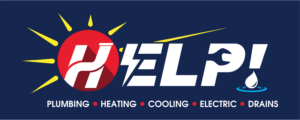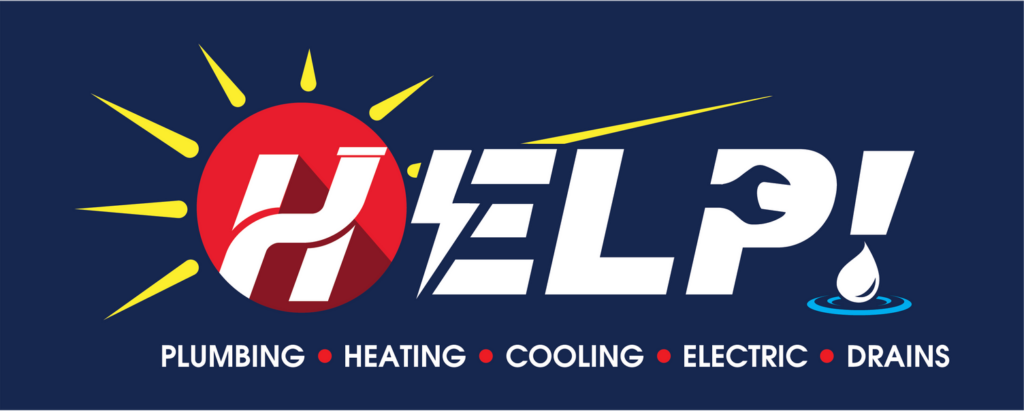A home’s electrical panel is a critical component of ensuring your home maintains its power, but surprisingly, many homeowners don’t understand its functions, let alone how to maintain it. This lack of understanding can lead to unexpected issues, from flickering lights to dangerous electrical fires.
This guide walks you through the basics of understanding your home’s electrical panel. We’ll explain what it does, how to check for potential problems, and some basic maintenance tips that can help protect your home from power issues and other dangerous faults.
Key Takeaways
● Electrical panels are also known as breaker boxes and are the central hub for powering outlets and other electrical components throughout your home.
● Electrical panels work by distributing power safely to various spaces in the home while safely restricting too much power from being redirected.
● Circuit breakers are used in electrical panels and are designed to trip when a circuit is overloaded to prevent damage and potential fire hazards.
● The National Electric Code recommends a clearance of at least 36 inches around electrical panels.
What is an Electrical Panel?
An electrical panel, also known as a breaker box, load center, service panel, or distribution board, plays a vital role in your home’s electrical system. As the central hub connecting the power lines from the street to your house’s internal electrical wires, it is essentially the lifeline of your home’s circuitry.
The electrical panel is designed to distribute electricity from the utility company to the various circuits within your home. A breaker or fuse protects each of these circuits. The breakers are switches that automatically shut off, or ‘trip,’ when they detect an overload or short circuit, preventing potential damage or fire.
How Does an Electrical Panel Work?
While the electrical panel is a relatively simple device, understanding how it works can help you better diagnose and fix any potential issues. Below is a basic overview of how the electrical panel works:
Power Distribution
The electrical panel’s primary function is to distribute power. Electricity from the utility company flows into your home through service wires, which connect to the main breaker in your electrical panel. This main breaker controls the flow of electricity, acting as a gatekeeper, distributing power to the individual circuit breakers.

Each circuit breaker in your home is connected to a specific set of outlets or appliances through electrical wires. Whenever you flip a switch or plug in an appliance, an electric current flows from the main electrical panel along the circuit, providing power to your devices.
Overload and Short Circuit Protection
One of the critical roles of an electrical panel is to protect your home from electrical issues, such as overloads and short circuits. An overload occurs when too many devices draw power from the same circuit, exceeding its safe capacity. A short circuit, on the other hand, happens when a ‘hot’ wire carrying current comes into contact with a neutral wire, causing a surge in electricity.
In both cases, the sudden rise in electrical current can generate heat, potentially leading to fire hazards. This is where circuit breakers come into play. They’re designed to automatically ‘trip’ or shut off when they detect an overload or short circuit, instantly stopping the flow of electricity and protecting your home.
When a breaker trips, it will move to the ‘off’ position or somewhere between on and off. You’ll need to switch it back to the ‘on’ position to restore power. However, it’s essential first to identify and resolve the underlying issue that caused it to trip to prevent future incidents.
Grounding and Neutral Wires
The grounding and neutral wires in your electrical panel also play a crucial role in maintaining safety. The neutral wire completes the electrical circuit by providing a pathway for the current to return to the source. The grounding wire offers an alternate path for electrical current in case of a fault. It directs the electricity into the ground, reducing the risk of electric shock or fire.

What Components Make Up an Electrical Panel?
Understanding the components of your home’s electrical panel is like getting a glimpse into the control room of your home’s electrical system. Each part has a specific role in ensuring electricity flows safely and efficiently throughout your home. Let’s break down these components one by one.
Main Breaker
The main breaker, often located at the top of the panel, is the primary control switch for the power supply to your home. It connects directly to the service wires that bring electricity from the utility company’s lines. This breaker is usually larger than the others because it handles a total load of all your home’s circuits. Flipping off this breaker in emergencies or during maintenance will cut power to the entire house.
Individual Circuit Breakers
Beneath the main breaker, you’ll find a series of individual circuit breakers. Each of these is connected to a different circuit in your home. They can be turned on or off independently, allowing you to control the power supply to specific areas or appliances.
Each breaker is designed to handle a certain amount of current, measured in amperes (A). If a circuit draws more current than its breaker’s capacity (due to overloading or a short circuit), it will ‘trip’ and disconnect the circuit to prevent overheating and potential fire hazards.
Bus Bars
Bus bars are thick metal strips within the panel that distribute power from the main breaker to the individual circuit breakers. They act as a highway for electricity, facilitating its flow throughout your home.

Neutral and Ground Bars
These are metal bars where the white neutral and bare copper or green insulated grounding wires connect. The neutral bar provides a return path for electric current, completing the circuit and allowing electricity to flow back to the utility grid. The ground bar, connected to the grounding wire, provides an alternative path for electrical current in the event of a fault, helping to prevent electric shock and fire.
Wires
Your electrical panel is a maze of wires, each playing a crucial role. Hot wires (usually black or red) carry electricity from the breakers to your home’s circuits. Neutral wires (typically white) return the current to the panel after it has flowed through your appliances. Grounding wires (usually green or bare copper) provide an extra layer of safety by guiding any stray current safely into the ground.
Signs You Should Upgrade or Repair Your Electrical Panel
Your home’s electrical panel is designed to last for many years, but like all things, it won’t last forever. Recognizing the signs that your electrical panel may need to be repaired or upgraded is crucial. Ignoring these signs can lead to serious safety hazards. Here are some key indicators that it might be time for an upgrade or repair.

Frequent Tripping of Circuit Breakers
Circuit breakers are designed to trip when a circuit is overloaded to prevent damage and potential fire hazards. However, if your breakers tripped frequently, this could indicate a problem. It may be a sign that your electrical panel no longer meets the demands of your home’s electrical load and needs an upgrade.
Old or Obsolete Panels
If your home is several decades old and still has its original electrical panel, it may be time for an upgrade. Older panels may not meet current safety standards and might be unable to handle modern appliances’ electrical load. Panels from certain manufacturers have also been found to have safety issues or recall and may need to be replaced.

Flickering Lights
While a single flickering light can simply indicate a faulty bulb, if multiple lights in your home are flickering or dimming, especially when using multiple appliances, it could be a sign that your electrical panel is struggling to distribute power adequately.
Warm or Discolored Panel Box
If your electrical panel feels warm to the touch or notices any scorch marks or discoloration on the panel box, it’s a sign that circuits are overheating, which could lead to an electrical fire. In such cases, it’s essential to call a professional electrician immediately.
Strange Noises or Smells
Buzzing sounds coming from your electrical panel are not typical. Similarly, a burning smell or the scent of heated metal is a sure sign of trouble. Both are strong indicators that your panel needs immediate attention.
Use of Extension Cords
If you’re relying heavily on extension cords because you don’t have enough outlets, it’s likely your home’s electrical system is outdated and unable to meet your needs. An upgraded panel can allow for more circuits, which means more outlets throughout your home.
How to Safely Maintain Your Electrical Panel
Ensuring the safety and functionality of your home’s electrical system relies heavily on proper electrical panel maintenance. While it is advisable to entrust specific tasks to professional electricians, homeowners can still contribute to the upkeep their panels through a few simple steps.
Here’s a guide on how you can safely maintain your electrical panel.
Keep the Area Around the Panel Clear
For safety reasons, keeping the area around your electrical panel clear of obstructions is essential. This ensures easy access to the panel in case of emergencies. The National Electric Code recommends a clearance of at least 36 inches around electrical panels.
Regularly Inspect the Panel
It is advisable to entrust in-depth inspections to trained professionals. However, homeowners have the capability to carry out a basic visual inspection.

It is essential to be observant of any indications of damage and decay, such as rust, as this might suggest the presence of a moisture problem. Additionally, it is necessary to examine for any loose or exposed wires as they may present a potential safety risk.
Test Your Circuit Breakers
Testing your circuit breakers once a year is a good idea to ensure they’re working correctly. To do this, simply flip each breaker off and then back on again. If a breaker won’t reset or keeps tripping, it may need to be replaced.
Schedule Regular Professional Inspections
Even with regular self-checks, it’s essential to have a professional electrician inspect your electrical panel every three to five years. They’ll be able to spot potential issues that may not be visible to the untrained eye and ensure all components are functioning correctly.
Electrical Panel FAQs
Can I perform maintenance on my electrical panel myself?
Homeowners have the ability and responsibility to conduct fundamental inspections, such as guaranteeing that the vicinity surrounding the panel is clear and searching for indications of deterioration.
Nevertheless, any necessary repairs or enhancements must be entrusted to a certified electrician. Acknowledging the hazards associated with electricity is essential, as errors can result in severe harm or even fatality.

What is the difference between a fuse box and a circuit breaker panel?
Both serve the same purpose – to protect electrical circuits by stopping the flow of electricity if it becomes unsafe. The key difference is how they do this. Fuses melt when overheated, breaking the circuit and stopping the flow of electricity. Circuit breakers, on the other hand, “trip” or switch off.
How many circuit breakers can fit in my panel?
The number of circuit breakers that can fit in a panel depends on the panel’s design and capacity. Typically, panels can accommodate anywhere from 4 to 42 breakers.
Is it normal for the circuit breakers to get hot?
Circuit breakers may become warm during operation but should not get hot. If a breaker is hot to the touch, this could indicate an overloaded circuit or a potential malfunction, and a professional should be contacted immediately.
What should I do if my circuit breaker keeps tripping?
When a circuit breaker repeatedly trips, it becomes crucial to pinpoint and resolve any underlying problems. This might entail unplugging devices to alleviate the strain on the circuit or potentially looking for a wiring issue. If, despite taking these measures, the breaker continues to trip, it is advisable to contact a knowledgeable electrician for professional assistance.
If you want to ensure that your electrical system is up to code and runs safely, working with a professional electrician is the most reliable way. HELP is a trusted electrical contractor that offers comprehensive electrical services, from panel installation and repair to full wiring solutions. Contact HELP today to schedule an appointment.
For more information about electric appliances and other home maintenance tips, check out the resources below:
- Signs Your Home Needs an Electrical Updating
- Common Problems with Furnace Heat Exchangers
- Will Replacing My Attic Insulation Really Help Me Save Money on My Energy Bill?


